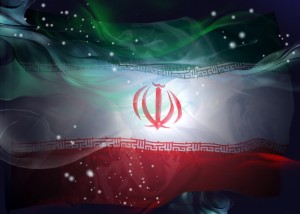
Strong opportunities exist for private investment, especially in medical devices and specialized medicines
LONDON,�July 24, 2013�/PRNewswire/ --�Iran's�healthcare industry is set for a bright future. The country is ranked 15th�among Middle East�and�Africa�(MEA) countries in terms of long-term investment potential. With a population of 75 million people � more than 50% of which is under the age of 35 � and an enormous amount of wealth coming in from its oil & gas reservoirs,Iran's�GDP is expected to grow at an average of 2.4% over the next 10 years.�Iran�also ranks well for Industry Rewards due to its population and healthcare reforms. The huge youth population cohort coupled with the healthcare industry's room for improvement, promise growth in the private sector and investments in the pharmaceutical, healthcare facilities, and medical devices market.
Iran's�healthcare industry was worth�26.44bn USD�in 2011, growing to�28.13bn USD�(+6.4%) in 2012. Currently, healthcare out-of-pocket (OOP) expenditure is at 55% � very high compared to neighbouring countries. Cardiovascular diseases account for 45% of deaths, while 18% are a result of road accidents, which also account for high disabilities and injuries numbers, especially among the younger population. The third main cause of death is cancer (14%, particularly lung cancer, expected to increase to 18% by 2030), followed by neonatal and respiratory diseases (6%). Diabetes, osteoporosis, and nutritional and psychological disorders are also on the rise. Drug addiction problems affect 3-5% of the population, with a strong correlation to HIV/AIDS cases. The need for a better medical system and products to address�Iran's�healthcare issues would therefore favour investments in the country.
Iran's�pharmaceutical market was worth�3.51bn USD�in 2012, with a projected 13% compound annual growth rate (CAGR) until 2014, beyond which it will steady at 8%. Expenditure on pharmaceuticals is expected to reach�4.14bn USD�by 2019 at a CAGR of 11%, taking inflation into account. The country produces 90% of its medicines and the Ministry of Health has put an ambitious goal of self-sufficiency within 4 years time. Local production is mainly focused on generic medicines, with over 70 Iranian pharmaceutical companies producing generics. On the other hand,�Iran's�shortage of specialized medicine has opened up the doors for Indian and Chinese products. "These lack quality and usually present side-effects, highlighting the market need for high volumes of specialized medicine, preferably of European and American origin," notes Frost & Sullivan Healthcare Analyst Uldouz Berenjforoush. "The country is expected to turn towards high volumes of foreign imports of high quality medicines for now."
The country's medical devices industry is import-driven and was worth�964mn USD�in 2012. Government healthcare investments towards modernization of services and facilities have been weighty. While the private sector accounts for 10% of hospital beds, which is rapidly growing, private expenditures account only for 20% of total expenditure. Nearly 88% of the country's medical devices are imported. Of this, 70.4% is from the European Union, mainly�Germany,�the Netherlands�and theUnited Kingdom. Continued growth is expected in the medical devices sector in order to address the shortage of specialized devices. This market is estimated to reach�1,053mn USD�by 2017.
Following the 1990 Iraq-Iran�war,�Iran's�government saw the need for reforms, focused on increasing the number of personnel, hospital beds, facilities as well as improving services and infrastructure, in an effort to attract and increase foreign investments. In 2012, the physician to population ratio had come to 1 doctor per 845 people � a large improvement from 10 years ago (1/3120) � and more than 90% of the population has access to healthcare services. The government provides the majority of health insurance, although in 2001 the law was passed to allow the establishment of private insurance systems. The military, the National Oil Company and Bank Melli have their own high-quality hospitals, while wealthier Iranians enjoy better quality private hospitals. "Private facilities are becoming more and more attractive due to the lack of efficiency in the public healthcare sector, with long waiting lines and poor facilities," says Berenjforoush. "The industry is still very young in the country, and there is a considerable room for growth in this field."
Medical tourism has been flourishing in�Iran�as it offers quality expertise at lower costs. In 2012 alone, the country hosted over 200,000 health tourists, who brought over�1.5bn USD�to�Iran, twice as much as the numbers in 2011. In the first half of 2013, over 85,670 medical tourists have visited�Iran, increasing the total number from last year by 135%. Health tourists come mainly from�Azerbaijan,�Turkmenistan,�Iraq,�Turkey,�Kuwait,�Oman,�India�and�Pakistan, and the majority of visits are for transplant, ophthalmology, orthopaedic, and dentistry purposes. The Iranian government has recognized the opportunities in medical tourism, investing in infrastructure to better serve visitors. For instance, medical services for Azerbaijani tourists are provided nearer the border. There are also taxi services available to take medical tourists from the border to the appropriate healthcare facility.�Iran�is focusing to become the hub for medical tourism of the Muslim world, especially serving patients from the Gulf countries.
Iran's�post-war healthcare industry has been rapidly improving although sanctions have had an impact on market growth. Nonetheless, the country is striving to stand out amongst its competitors by aiming to provide high quality services to Iranians as well as medical tourists. With a high OOP and growing population as well as its goal to be the hub for medical tourism in the Muslim world,�Iran�opens up the doors to private investments, especially in the medical devices sector and specialized medicines.
By PR News Wire
The Iran Project is not responsible for the content of quoted articles.










